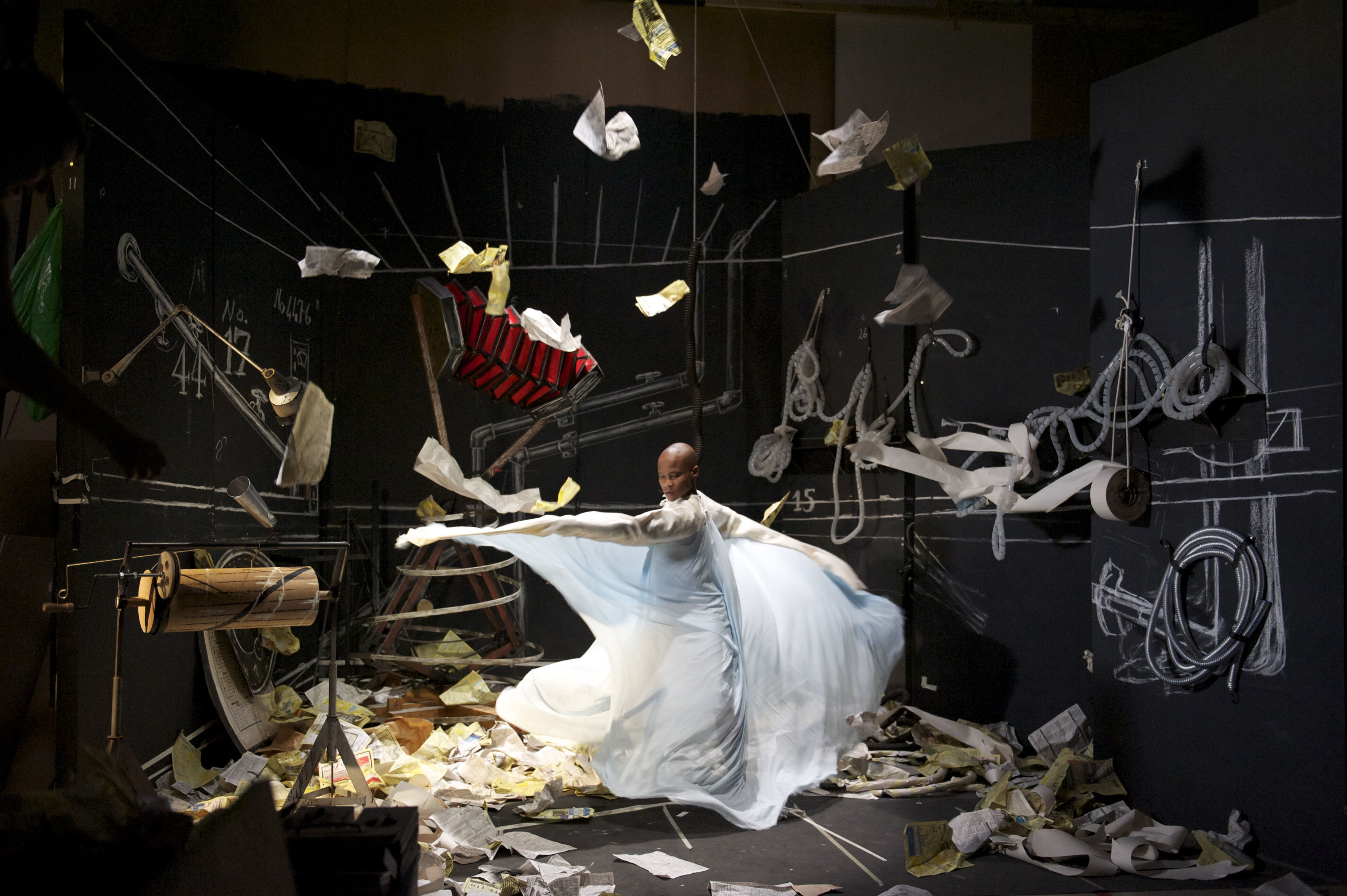The former Rissei Elementary School site, nowadays an occasional cultural events center, was earlier home to the Kyoto Dento, the electric company whose technology helped industrialist Katsutaro Inabata to demonstrate the Lumière Brothers' cinématographe camera in 1897 — Japan's first experience with film. Significant as a historical spot for the beginning of cinema in Japan, the venue now inaugurates the build up to the 2015 "Parasophia: Kyoto International Festival of Contemporary Culture" with the Asia premiere of William Kentridge's "The Refusal of Time" (2012).
Kentridge has an illustrious recent history with the city, giving lectures at Doshisha University in 2008, holding a solo exhibition at the National Museum of Modern Art, Kyoto, in 2009, and being awarded the 2010 Kyoto Prize in Art and Philosophy — sometimes called the Japanese Nobel Prize for the humanities.
"The Refusal of Time" began to formulate when Kentridge was invited by the Paris institution Laboratoire to undertake a project in consultation with a scientist. He started communicating with Peter Galison, an American historian of science, and the two exchanged stories. One by Galison concerned a 1905 paper by Einstein on the delay in telegraph signals between train stations synchronized to a central clock, hypothesizing the supposed relativity of time.

















With your current subscription plan you can comment on stories. However, before writing your first comment, please create a display name in the Profile section of your subscriber account page.